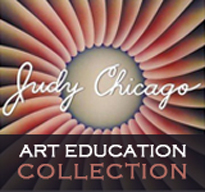Forum Replies Created
-
AuthorPosts
-
ale5171
ParticipantI find that many teachers try to answer the question of how does one efficiently guide without directing their class of students. This question has appeared in a number of my art education classes, and I can honestly say that I do not have an immediate answer to give. I do believe that, as a future art education teacher, that I need to continually ask myself this question and to think of the differences that it will have in my classroom one day. It is true that students immediately hear the word “teacher” and associate all power and authority, in the classroom setting, to this single individual. It is difficult, and quite tricky, for a teacher to establish a persona that allows students to want to guide their own learning instead of fully relying on a teacher. Through research, dialogue, experimentation, and reflection, students can find ways of giving themselves a powerful influence on their learning in the art classroom. As I briefly mentioned, the question as to what fosters teacher guidance comes through creating a space that encourages students to guide their own learning and experimenting. Art teachers need to find that happy medium in the debate between guiding verses directing. From my own experience in the high school art classroom, I often guided most of my learning. My art teacher was a wonderful individual who obviously understood the guiding concept. Not only was my art teacher a caring and engaged teacher, he was also very hands-off with student learning. He encouraged us to research, experiment, come up with a hypothesis, discuss, and advocate for the art that we were learning about and producing. I can obviously see that the guiding method may work more efficiently in a high school age group; however, that does not mean that younger ages cannot engage in this idea as well! I have recently been reading a lot about research workbooks, and I believe that incorporating something like this into the classroom would encourage students to take on the role of teacher/learner/researcher. Sure, this puts a lot of responsibility into the hands of a student; however something like this may be the answer to this question prompt- how does a teacher guide without directing students? I believe that teachers should encourage students to become researchers in their own craft- to make decisions, discussions, experiments, reflections, and presentations tailored to meaningful parts of their lives. By creating an environment that encourages this type of learning, I do believe that teachers can begin to shed power imbalances in the art classroom.
-
AuthorPosts
